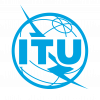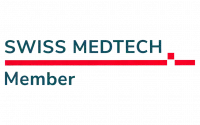BLOG
Telecom26 blog
Remote diagnostics enabled by secure, reliable communications over multiple connectivity technologies can help in the fight against disease outbreaks anywhere in the world

It’s impossible to avoid the term ‘coronavirus’ anywhere at the moment, as the world goes into lockdown. Arguably, the most concerning thing about it – as with any new disease outbreak – is how little is currently known about its transmission, infectivity, mutability, and so on.
Collecting information from around the world, as it spreads to an increasing number of countries and regions, and sharing that data, is therefore key to trying to understand the virus, and then isolate isolating, manage and hopefully eradicate it.
So, any solution that allows data to be fed into, and shared with, regional and global disease databases and healthcare networks is a step in the right direction in helping to minimise the spread of the virus, help to better understand its biological mechanism, and hopefully find a vaccine.
Remote diagnostics has a major role to play here, as it can be employed to remotely diagnose and monitor those infected (with any disease or virus), particularly those who may live remotely or may be in quarantine or self-imposed isolation.
At the same time, remote diagnostics can help to eliminate chance meetings of individuals who think they may have been exposed to the virus with those who have not yet – for example, by avoiding visits to city hospitals or other disease centres, and allowing them to stay at home. Sharing data and minimising contact is the first line in the battle against this new outbreak.
Remote diagnostics and coronavirus 2019
Of course, the benefits of remote diagnostics are not limited to ‘coronavirus disease 2019’, (to give it it’s full name), and it remains to be seen how the outbreak will pan out. Remote diagnostics is essential in the management of any disease, let alone one that is rapidly escalating and even reaching epidemic or pandemic status.
Telecom26 interconnected connectivity solutions for healthcare enable a rapid and robust response to disease outbreaks through remote diagnostics, disease surveillance, policy application, monitoring control programmes, point of care testing, and clinical decision support, and other capabilities.
Remote diagnostics from anywhere
Our robust, flexible interconnected solutions – through the simple use of Telecom26’s Connectivity Solutions – mean that clinical data can be captured from almost anywhere, even when the data source is on the move or remote. This allows data to be captured automatically and then quickly fed back into the relevant databases and networks used by healthcare agencies, government departments, hospitals, clinics, pharma companies, the global disease network, research agencies, and so on.
As well as enabling automatic management and monitoring of results for fast and better treatment, the robust connectivity that our solutions provide also ensures that supplies can be accurately managed – even on the move – in order to anticipate and avoid stock issues or stockouts.
It also enables the secure and private delivery of data and analysis, which can help to streamline disease and health programs and allow agencies to respond quickly to minimise outbreaks and reduce spread of infectious diseases, whether in humans, animals, or both.
Merging private and public networks
The Telecom26 Connectivity Service is unique in that it merges the private and public worlds – we are one of the few providers that can enable this – meaning that devices and patients can be monitored within private campus networks, for example, within hospitals, as well as at rural sites and remote healthcare locations, or where quarantine procedures are involved. We also have roaming partnerships with more than 600 public mobile networks around the world, and the Telecom26 Private Network.
Our new router – the Telecom26 Celerway multi-IMSI router – offers the ability to securely access multiple technologies, including 2G, 3G, 4G LTE, WiFi, NB-IoT, and Satellite networks in a single package. It maintains the best possible QoS because it comprises multiple cellular modems, each with multi-IMSI SIMs, so that while one is serving connectivity, the other is constantly scanning for optimum coverage.
Security is also built into the fabric of our networks, ensuring zero points of vulnerability. Put simply, the ability to connect securely to any network with a single provider to provide connectivity wherever it is needed not only helps to battle unpredicted disease outbreaks, but also reduces costs, accelerates operations and enhances efficiency of data collection.
Allied to the integral privacy and security for confidentiality, Telecom26’s remote diagnostics solutions can significantly benefit all organisations on the frontline of the battle against disease outbreaks.



